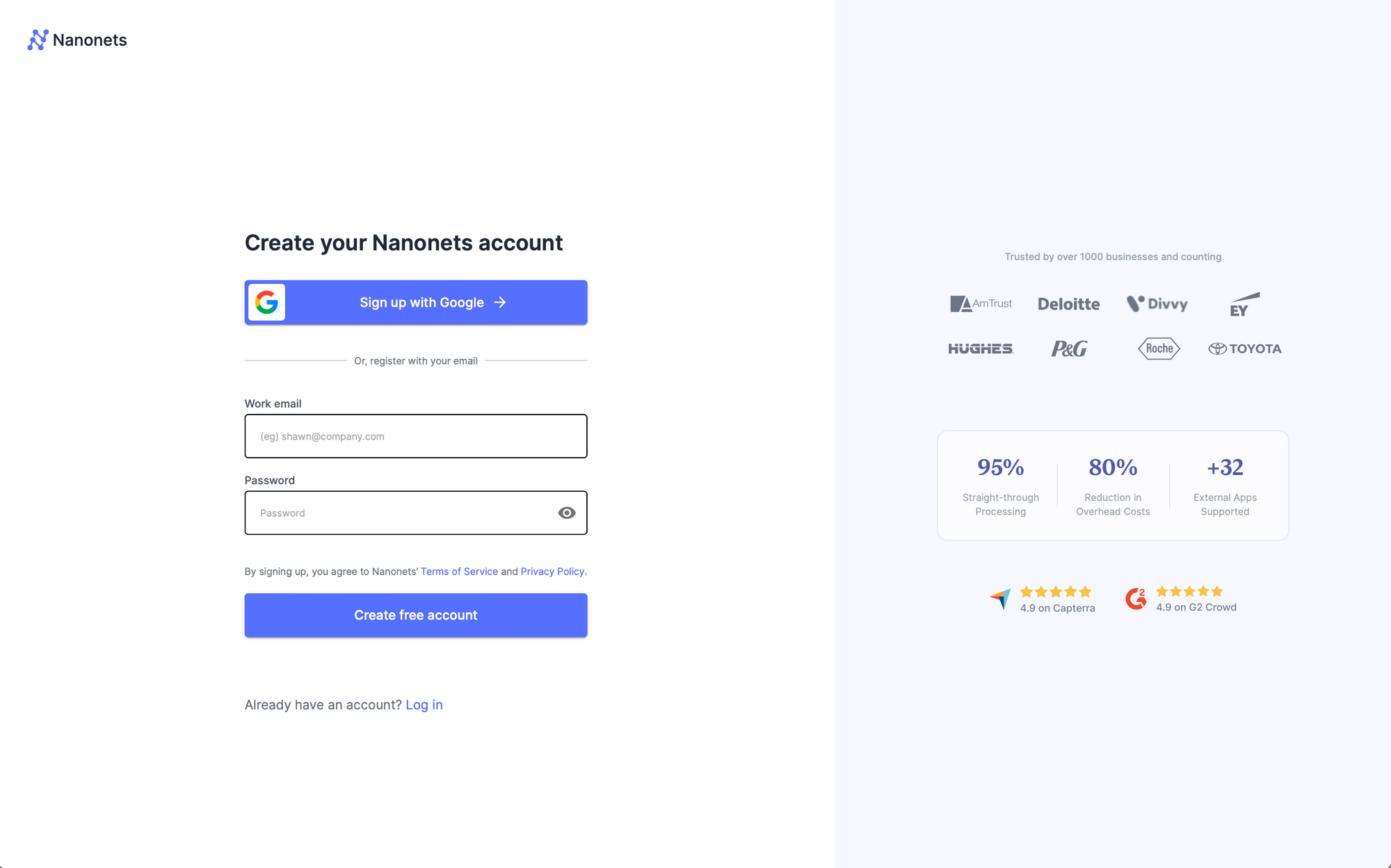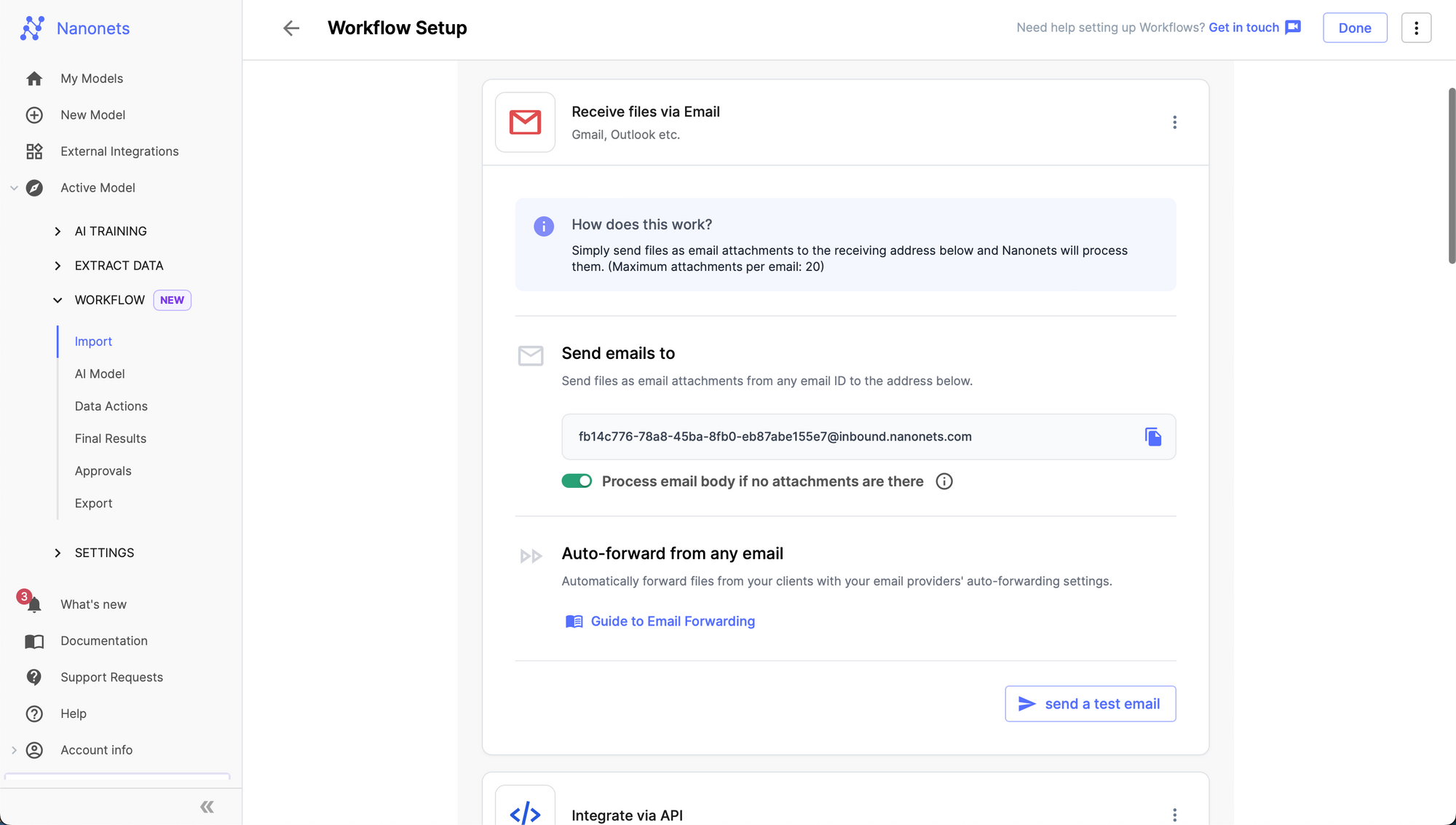Introduction
In today’s digital age, managing an avalanche of emails can be an overwhelming task, especially for businesses dealing with hundreds or thousands of emails daily. However, these emails often contain vital information, from purchase orders and invoices to customer queries or even insights that could help streamline your business operations. What if you could intelligently extract this specific data from your emails, efficiently and automatically? This capability can revolutionize your business workflows, enhance your customer service, and provide a competitive edge. At Nanonets, we understand the significance of this process and we have the perfect solutions to assist you. In this blog post, we will guide you through the process of extracting specific data from your emails, leveraging powerful software tools and automated data extraction techniques. We’ll cover how to implement these methods, the benefits they offer, and some key considerations to bear in mind. So whether you’re a small startup or a large enterprise, read on to unlock the potential of your email data and transform your business operations.
Invoice Processing
Businesses often receive invoices via email. Automatic extraction of data from these emails can streamline the invoice processing workflow.
Workflow Example: An email containing an invoice arrives in the company’s mailbox. The email extraction tool identifies the email based on preset parameters, such as sender address or certain keywords in the subject line. The tool then extracts necessary data such as invoice number, date, supplier name, and total amount, and automatically inputs this data into the company’s accounting software (say Quickbooks) for further processing and payment.
Customer Support Management
Many businesses manage customer queries through email. Extracting specific data can help categorize and prioritize these queries.
Workflow Example: A customer sends an email query to the support address. The extraction tool scans the email’s content, extracting the customer’s name, contact information, and the nature of the query. This data is then automatically transferred to the company’s CRM or ticketing system. Based on the query’s nature, the system can prioritize and assign it to the right customer service representative, ensuring a swift response.
Sales Lead Management
Sales teams often receive leads via email that need to be quickly acted upon.
Workflow Example: The company receives an email from a potential customer expressing interest in a product. The data extraction tool scans the email, identifying and extracting key data such as the customer’s name, contact information, and their interest area. This data is automatically transferred into the company’s lead management or CRM system. The sales team can then quickly follow up with the potential customer.
Supply Chain Management
Email data extraction can be a game-changer in supply chain management by helping companies stay updated with orders and shipments.
Workflow Example: A supplier sends an email confirming the shipment of goods. The extraction tool scans the email, identifying key data such as shipment date, expected delivery date, and tracking number. This data is automatically input into the company’s supply chain management software, keeping the system up-to-date and allowing for efficient tracking and planning.
HR Management
HR departments often deal with a large number of emails, including job applications, employee leave requests, and more.
Workflow Example: A candidate submits their job application via email. The data extraction tool scans the email and its attachments, extracting the candidate’s name, contact information, and relevant qualifications. This data is automatically input into the HR management system, allowing for streamlined handling of the recruitment process.

By automating the extraction of specific data from emails, businesses can significantly improve their efficiency and accuracy across various workflows.
Extracting specific data from emails can be a challenging process, but several methods can streamline this task. Here, we’re going to discuss three straightforward approaches: Manual Extraction, Rule-Based Filtering, and Basic Programming Scripts. We’ll walk through each process, set them up in real life, and discuss their limitations.
- Manual Extraction:
Manual extraction is the most basic approach. As the name suggests, it involves manually going through each email and extracting the necessary data. This method doesn’t require any specific software or technical skills beyond a basic understanding of email functions.
Setup: To extract data manually, open the email containing the required information. Then copy the data and paste it into your desired location, such as an Excel spreadsheet or a Google doc. You might need to organize and categorize the data according to your requirements.
Limitations: This method is time-consuming, especially with large volumes of emails. It is prone to human errors and may not be feasible for businesses with hundreds of emails daily. Furthermore, it doesn’t offer any automation capabilities, meaning each new email must be processed manually.
2. Rule-Based Filtering:
Many email clients, such as Gmail or Outlook, offer rule-based filtering options. These rules can automatically sort incoming emails into specific folders based on certain criteria, making it easier to locate and extract the required data.
Setup: For instance, in Gmail, go to ‘Settings’ then ‘Filters and Blocked Addresses’. Here, you can create a new filter. You might set the filter to look for specific words in the email body or subject line, or emails from a specific sender. Once your filter is set, you can choose what happens to these emails – you might want them to be labeled or moved to a specific folder.
Limitations: While rule-based filtering is a great way to organize your emails, it’s limited in terms of actual data extraction. The system can help you find the emails containing the data you need, but you’d still have to manually extract and record that data.
3. Basic Programming Scripts:
For a more automated process, you can use basic programming scripts. Languages like Python have libraries like IMAPClient and email that can connect to your mailbox, read emails, and even extract specific data.
Setup: First, you’ll need to install the necessary Python libraries using pip:
pip install imapclient email
Next, you can write a script that connects to your email server, fetches the emails, and extracts the data. For example, you might write a script that looks for invoice numbers in your emails and saves them to a CSV file. The script would log into your email, look through each email in your inbox, find the invoice numbers, and write them to your file.
Limitations: The programming script approach requires a certain level of technical expertise. The script needs to be written and tested, and not everyone is comfortable with programming. Additionally, this method requires regular maintenance and updates as your email structure and data extraction needs evolve.
While these methods can help you extract specific data from your emails, none offer a comprehensive, automated, and error-free solution. This is where Nanonets comes into play. We provide a robust, automated data extraction platform that can handle large volumes of emails, reduce human error, and save valuable time, all without requiring any technical expertise. Stay tuned to learn more about how our solution can revolutionize your email data extraction process.
We have listed down steps to set up email data extraction in Nanonets based on your use case. You can set up a workflow to extract data from incoming emails within seconds
Alternatively, you can take a look at below demo to get started and set up your email data extraction workflow.
Here are the steps –

- Choose a pretrained model based on your document type / create your own document extractor within minutes.

- Once you have created the model, navigate to the Workflow section in the left navigation pane.

- Go to the import tab and click on “Receive files via Email”.
- In the expanded view, you will be able to find an auto generated email address created by Nanonets.

- Any Email sent to this address will be ingested by the Nanonets model you created and structured data will be extracted from it. You can set up email forwarding to automatically forward incoming emails from any email address to the Nanonets email address to automate email ingestion and data extraction.
Learn how to set up Email Forwarding from any email
Once you have completed the above steps, the integration will be added to your Nanonets account. All new and incoming emails will be imported into Nanonets and will be processed by your model which will extract structured data from them. You can also extend the workflow by adding postprocessing, validation / approval rules, exports to software / database of your choice.
In an era where data is the new gold, harnessing the potential of email data is critical for businesses. However, the methods we discussed earlier, while somewhat useful, aren’t without significant limitations. They either require substantial manual intervention, have limited automation capabilities, or demand programming expertise. Nanonets is a transformative solution that uses the power of AI to revolutionize your email data extraction workflows.
With Nanonets, you can automate data extraction from a wide array of email types, irrespective of format or structure. Whether you’re handling invoices, managing customer support, or tracking leads, Nanonets adapts to your specific needs, significantly improving your operational efficiency.
But how does Nanonets achieve this? The answer lies in its advanced AI-driven OCR (Optical Character Recognition) capabilities. Unlike traditional OCR tools, Nanonets leverages machine learning to extract, categorize, and validate data from emails with unparalleled accuracy. It learns from your specific data sets, becoming more precise and efficient over time.
Setting up Nanonets is a breeze. You don’t need any technical expertise or complex programming skills. With its intuitive, user-friendly interface, you can set up and train your model in just a few clicks. Once set up, Nanonets works tirelessly in the background, extracting data from incoming emails and routing it to your preferred destination, be it a CRM system, an Excel sheet, or a database.
For instance, let’s take an invoice processing scenario. When an invoice arrives in your inbox, Nanonets automatically identifies and extracts key data such as the invoice number, supplier name, and total amount. It then inputs this data into your accounting software for payment processing. In just a few seconds, what was once a laborious task is completed seamlessly, freeing your staff to focus on more strategic tasks.
Moreover, with Nanonets, you don’t have to worry about security. We understand the sensitive nature of the data you handle. Nanonets is designed with robust security measures, adhering to the highest industry standards. Your data is protected with us.
Nanonets turns the limitations of traditional email data extraction methods into an opportunity for growth and efficiency. It takes the mundane and error-prone task of manual data extraction and transforms it into a streamlined, accurate, and insightful process.
With Nanonets, you’re not just automating data extraction; you’re automating success. You’re freeing your team from tedious tasks, gaining invaluable insights, and giving your business the edge it needs in a competitive marketplace.
- SEO Powered Content & PR Distribution. Get Amplified Today.
- EVM Finance. Unified Interface for Decentralized Finance. Access Here.
- Quantum Media Group. IR/PR Amplified. Access Here.
- PlatoAiStream. Web3 Data Intelligence. Knowledge Amplified. Access Here.
- Source: https://nanonets.com/blog/extract-data-from-emails/



